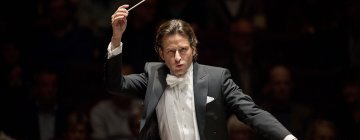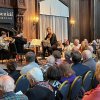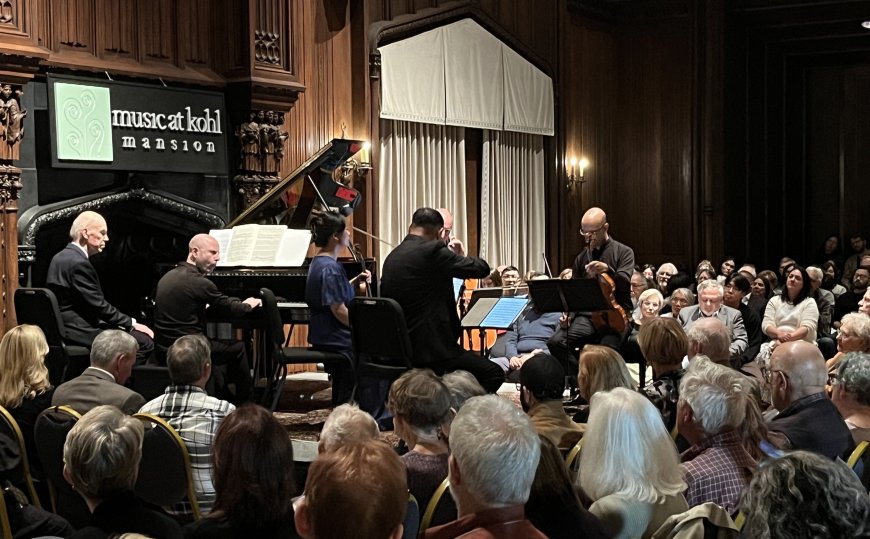
The Alexander String Quartet, on the verge of disbandment, gave its final Bay Area concert on Sunday, May 4, presented by Music at Kohl Mansion. That this was the Quartet’s 29th appearance at the Burlingame venue — more than any other ensemble or performer — is just one marker of the group’s importance to local classical music since the Alexanders set their home base in San Francisco in 1989.
This was not a sad farewell, however. It was, as Music at Kohl Executive Director Patricia Kristof Moy remarked, a celebratory occasion — as well as one more chance to appreciate the quality of the Quartet’s music-making. Indeed, to my ears, the ensemble has gradually grown tighter and sturdier in performance over the years.
The end point of this evolution was nicely demonstrated on Sunday, no more so than in the concert’s opening work, Haydn’s String Quartet in G Major, Op. 77, No. 1. In this performance, the piece, one of the composer’s last completed quartets, was crisp to the point of perfection. There was brightness and good humor, both in tone quality and in the vigor of exchanges between instruments, qualities that make for ideal Haydn.
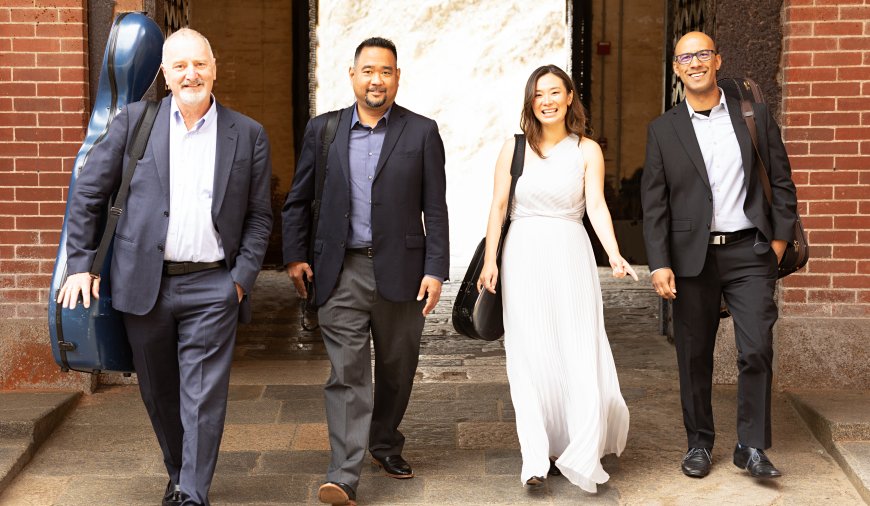
First violinist Zakarias Grafilo offered a searingly shiny treble tone in his extensive solos, moderating this in unison passages. Second violinist Yuna Lee and violist David Samuel also displayed sparkling clarity, though were somewhat softer in tone, making for excellent contrast between Grafilo and Lee in the opening movement. Down below, cellist Sandy Wilson played dark and a little growly — this kept the crispness and the intensity up.
Next came a recent composition that the Alexanders have been playing to great success, The Little Things by 25-year-old Los Angeles-bred composer Kian Ravaei. It’s a set of seven miniatures, each inspired by a poem by Emily Dickinson, alternating between the beautiful and the charmingly weird. A moonlit nocturne and a portrait of sunrise are in the former camp, smooth and gently mixed, combining different tone colors from the instruments.
The weird movements depict animals with alarming accuracy. Ravaei has his quartet imitating birds, butterflies, spiders, and a snake by using tremolo, ponticello, ricochet, cross-sawing, and other string techniques. The Alexanders executed it all with the same careful elegance shown in the less goofy movements. It’s a startlingly accomplished little suite.
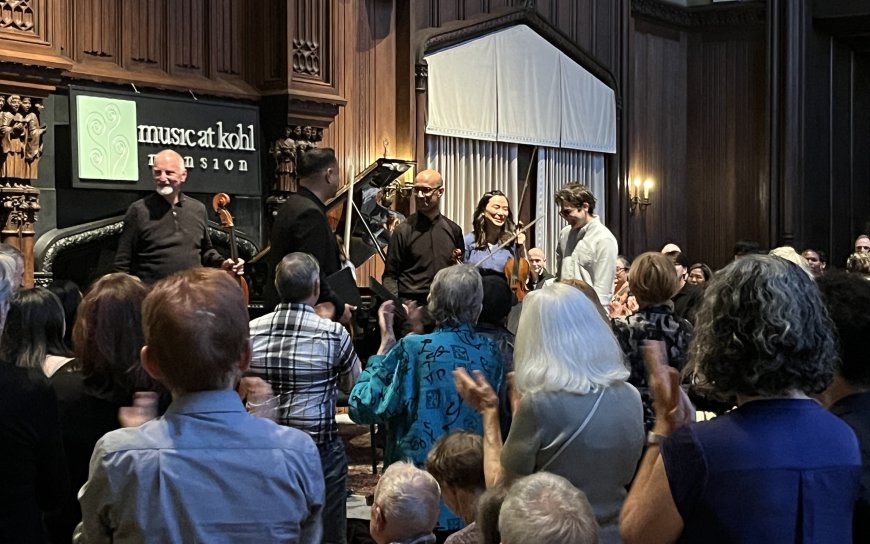
The concert concluded with Brahms’s Piano Quintet in F Minor, with pianist Jeffrey LaDeur joining the Quartet and making his Kohl debut. It may seem odd to have your final performance as a group be as part of a larger ensemble, but the choice of repertoire made the setup work. Brahms keeps the piano in the background as harmonic support throughout much of the piece. What’s more, this was a performance emphasizing the strings. The piano was entirely behind all four Quartet members on Kohl’s tiny stage, making for an odd balance in a few passages that had the sound of individual strings jumping out where the piano would normally dominate.
But overall, this performance was mellow, an eminently appropriate mood for Brahms. Grafilo exchanged his shiny violin tone for one that was smooth and rounded, a close match for Samuel’s sound on viola. Brahms achieves balances, combinations, and exchanges between the string players that were clear and enlightening in this rendition. And all the time, LaDeur was working at the keyboard with equal skill, in the background but not to be neglected.
If this concert is how listeners remember the Alexander String Quartet, then this performance will commemorate a group that went out at the peak of its abilities.
